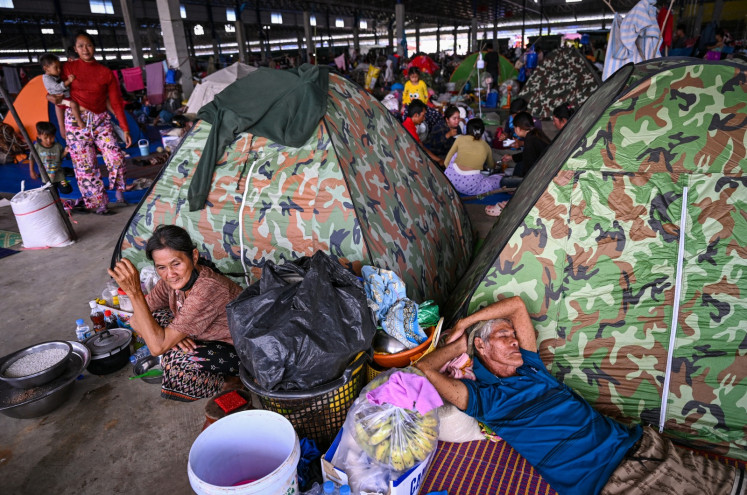Popular Reads
Top Results
Can't find what you're looking for?
View all search resultsPopular Reads
Top Results
Can't find what you're looking for?
View all search resultsEfficient cross-border payment system can be boon to migrant workers, recovery
An efficient cross-border payment system will spur an increased movement of migrant workers, who can then contribute to economic recovery through the money they send home.
Change text size
Gift Premium Articles
to Anyone
 Members of the Indonesian Migrant Workers Network (JBMI) in Hong Kong celebrate Idul Fitri on May 16, 2021, wearing red ribbons as a symbol of their opposition Hong Kong's mandatory testing and vaccination for domestic workers, which they called discriminatory. ( Indonesian Migrant Workers Network (JBMI)/-)
Members of the Indonesian Migrant Workers Network (JBMI) in Hong Kong celebrate Idul Fitri on May 16, 2021, wearing red ribbons as a symbol of their opposition Hong Kong's mandatory testing and vaccination for domestic workers, which they called discriminatory. ( Indonesian Migrant Workers Network (JBMI)/-)
R
emittances from migrant workers have played a vital role as one of the primary sources of foreign currency for many countries, including Indonesia. The inflow of money from migrant workers has helped to strengthen Indonesia’s current account, particularly in its secondary income account.
Even though Indonesia is suffering a current account deficit from a generally large trade deficit in services and its primary income, a surplus in its secondary income has reduced the current account deficit along with surplus trade in goods, thanks in part to the remittances from Indonesian migrant workers across the world.
Despite some restrictions in cross-border mobility due to the coronavirus pandemic, approximately 3.2 million Indonesians working overseas sent remittances totaling over US$9.2 billion in 2021. The number of workers and the value of their remittances were obviously higher before the pandemic, which reached over 3.7 million migrant workers and $11.4 billion in remittances. This made Indonesia the second largest exporter of migrant workers in ASEAN after the Philippines.
With the declining trend in COVID-19 infections in many countries, people’s mobility is expected to return to normal, not just within a country but also across countries, and that includes the movement of migrant workers.
In 2021, the World Bank reported that remittance flows to low- and middle-income countries reached $605 billion, a robust growth of 8.6 percent compared to the previous year. The bank further predicted that remittance flows to low- and middle-income countries in 2022 would increase 4.2 percent to reach $630 billion.
One of the essential factors to ensuring smooth remittance flows is a cross-border payment service. This is essential for people who are working overseas in order to send money either to their home country or to other countries for business purposes.
Over the past few decades, along with an increase in the international mobility of goods and services, both capital and people have contributed to the growing economic importance of cross-border payments. The value of cross-border payments is projected to increase from nearly $150 trillion in 2017 to over $250 trillion by 2027, or an increase of over $100 trillion in just 10 years.


















